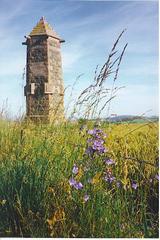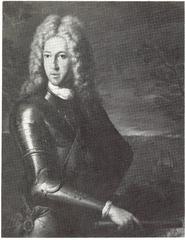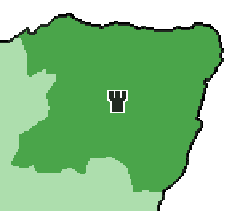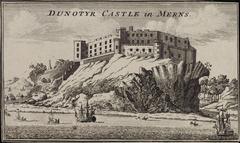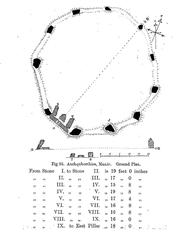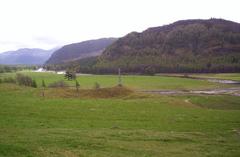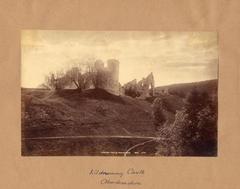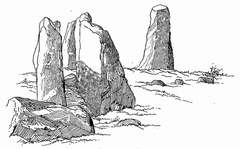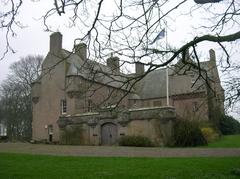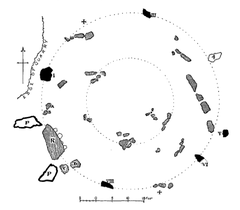
Deer Abbey Visiting Hours, Tickets, and Guide to Ballater Historical Sites
Date: 04/07/2025
Introduction to Deer Abbey and Its Significance
Set amidst the rolling landscapes of Aberdeenshire, Deer Abbey stands as a monument to Scotland’s medieval and spiritual heritage. Founded in 1219 by William Comyn, Earl of Buchan, as a Cistercian monastery, Deer Abbey’s story stretches back to an even earlier monastic settlement established by St Drostan in the 6th century. This deep-rooted spiritual lineage is immortalized in the Book of Deer, a 10th-century illuminated manuscript featuring the earliest known Scottish Gaelic writing. The abbey’s ruins offer visitors a compelling glimpse into monastic life, agricultural innovation, and religious reform, all woven into the fabric of Scottish history.
Managed by Historic Environment Scotland, Deer Abbey is freely accessible to the public year-round. This comprehensive guide provides practical information on visiting hours, tickets, accessibility, and nearby attractions, ensuring a memorable visit to one of Aberdeenshire’s most evocative historical sites. For further details, consult Historic Environment Scotland, Undiscovered Scotland, and Visit Aberdeenshire.
Contents
- Early Monastic Roots and the Book of Deer
- Foundation and Medieval Significance of the Cistercian Abbey
- Turbulence, Decline, and Post-Reformation Transformation
- Preservation and Modern Stewardship
- Visiting Information: Hours, Tickets, Accessibility
- Travel Tips and Nearby Attractions
- Archaeological and Cultural Legacy
- Site Features and Architectural Remains
- Frequently Asked Questions (FAQ)
- Conclusion and Visitor Recommendations
- Further Reading and Official Links
Early Monastic Roots and the Book of Deer
Long before the Cistercian foundation, the area around Deer Abbey was an early center of Celtic Christianity. In the late 6th century, St Drostan, a follower of St Columba, established a monastery at Deer (Undiscovered Scotland; New Deer History). The enduring legacy of this early presence is the Book of Deer—a 10th-century illuminated manuscript. The Book contains Latin religious texts and unique Gaelic annotations that are the oldest surviving examples of written Scottish Gaelic. It reveals insights into the region’s monastic life, land grants, and the integration of Christian and Gaelic culture (Undiscovered Scotland).
Foundation and Medieval Significance of the Cistercian Abbey
In 1219, William Comyn formally established Deer Abbey for Cistercian monks from Kinloss Abbey (Encyclopedia.com). The abbey’s cruciform church and associated monastic buildings followed the order’s typical austere architectural style. The Cistercians were known for their expertise in agriculture and land management, transforming the surrounding landscape and supporting the local economy.
Deer Abbey played a central role in the religious and administrative life of the region. In 1503, its influence led to the division of the old parish, creating the “new” Parish of Deer, reflecting the abbey’s significance in both spiritual and civic life (New Deer History).
Turbulence, Decline, and Post-Reformation Transformation
Like many Scottish abbeys, Deer Abbey suffered during the Wars of Independence and subsequent centuries (Encyclopedia.com). By the Reformation in 1560, the monastic community had dwindled and the abbey was dissolved, its lands passing to local lairds (Undiscovered Scotland). In the 19th century, the Fergusons of Pitfour converted the site into a walled garden, repurposing the abbey’s stonework, and built a mausoleum (since removed, with only the portico remaining).
Preservation and Modern Stewardship
Deer Abbey was acquired by the Catholic Diocese of Aberdeen in 1926 and taken into state care in 1933. Today, it is managed by Historic Environment Scotland to ensure its ongoing preservation (Undiscovered Scotland; SOBT Honest Guide). Visitors can still appreciate the abbey’s original layout, ancient yew trees, and the tranquil setting that has inspired contemplation for centuries.
Visiting Information: Hours, Tickets, Accessibility
-
Visiting Hours:
- 1 April – 30 September: Daily, 9:30 am – 5:30 pm (last entry 5:00 pm)
- 1 October – 31 March: Daily, 10:00 am – 4:00 pm (last entry 3:30 pm)
- Open year-round; check Historic Environment Scotland for updates.
-
Tickets: Free entry; no tickets required.
-
Accessibility: The site is mostly level but has uneven grassy terrain and limited paved paths. Some areas may be challenging for wheelchair users.
-
Parking: Small layby near the entrance.
-
Facilities: No on-site restrooms or café. Nearest amenities in Mintlaw or Old Deer.
-
Dogs: Welcome but must be kept on a lead.
-
Public Transport: Nearest hub is Mintlaw, accessible by local bus routes from Aberdeen and Peterhead. The abbey is a short walk or taxi ride from Mintlaw (Mapcarta).
Travel Tips and Nearby Attractions
- Best Time to Visit: Spring to early autumn provides the best weather and scenery.
- What to Bring: Sturdy footwear, weatherproof clothing, snacks, and water.
- Photography: Excellent opportunities, especially at sunrise or sunset.
- Nearby Attractions:
- Aden Country Park: Walking trails, Aberdeenshire Farming Museum
- Aikey Brae Stone Circle: Prehistoric monument nearby (SOBT Honest Guide)
- Mintlaw and Old Deer: Local amenities and further historical interest
For more Aberdeenshire sites, see Visit Aberdeenshire.
Archaeological and Cultural Legacy
Deer Abbey’s historical significance is amplified by its association with the Book of Deer and nearby ancient sites. The abbey’s remains and the Book of Deer continue to attract scholars and visitors alike, reflecting its enduring role in Scotland’s religious, linguistic, and cultural history (New Deer History).
Site Features and Architectural Remains
Visitors can explore the abbey’s foundations, the classical portico entrance, and the remains of the refectory. The tranquil grounds, lined with ancient yew trees, evoke the abbey’s contemplative past.


Frequently Asked Questions (FAQ)
Q: What are Deer Abbey’s opening hours?
A: Open daily year-round; April–September 9:30 am–5:30 pm, October–March 10:00 am–4:00 pm.
Q: Is there an entry fee?
A: No, entry is free and no tickets are required.
Q: Is the site accessible for people with disabilities?
A: The terrain is mostly level but uneven and grassy. Wheelchair access is possible in some areas, but not all.
Q: Are guided tours available?
A: No regular tours, but local groups occasionally offer special tours—check with Historic Environment Scotland for updates.
Q: Are there facilities on site?
A: No restrooms or cafés; nearest amenities are in Mintlaw or Old Deer.
Q: Can I bring my dog?
A: Yes, dogs are welcome but must be on a lead.
Conclusion and Visitor Recommendations
Deer Abbey offers a unique window into Scotland’s religious and cultural evolution. Its evocative ruins, peaceful setting, and deep historical roots invite both contemplation and exploration. Whether you’re a history enthusiast, cultural explorer, or casual visitor, Deer Abbey and its neighboring attractions in Aberdeenshire provide a rewarding experience. For the most up-to-date information, check Historic Environment Scotland.
Download the Audiala app for interactive guides and stay connected with Scotland’s heritage.
Further Reading and Official Links
- Historic Environment Scotland – Deer Abbey
- Undiscovered Scotland – Deer Abbey
- New Deer History
- Visit Aberdeenshire – Ballater and Deer Abbey
- SOBT Honest Guide – Deer Abbey
- Encyclopedia.com – Deer Abbey


